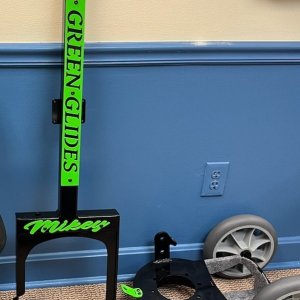T Monahan
Supportive Member
Some people have made big drama about use of Di-Chlor in water when washing and processing some rugs. The use of it is no secret with some Centrum Force® Starr Wash Tub users and other rug wash operators when processing rugs.
In the past, for personal benefit, a couple of us wash tub users tested its use for its effectiveness in preventing cross contamination with rugs that we were washing at the same time. We were pleased with the findings.
Now we wanted to know if the dilution used damaged the textile. The following is how we set up the more recent test:
General Procedure
A sample of cleaning compound “Di-Chlor II” commonly used on water treatment of recreation and sport facility pools and hot tubs was tested to determine is safe to use on floor covering textiles containing natural wool fibers with any long term affect. Three samples were prepare using different dilutions of the Di-Chlor II along with an untreated control sample and subjected to an accelerated sunlight exposure along with an accelerated heat aging process. The three dilutions were 6oz/1200gl (as use by wash tub users), 12oz/1200gl, and undiluted concentrate powder.
Does anyone really care about the Findings and Conclusions?
In the past, for personal benefit, a couple of us wash tub users tested its use for its effectiveness in preventing cross contamination with rugs that we were washing at the same time. We were pleased with the findings.
Now we wanted to know if the dilution used damaged the textile. The following is how we set up the more recent test:
General Procedure
A sample of cleaning compound “Di-Chlor II” commonly used on water treatment of recreation and sport facility pools and hot tubs was tested to determine is safe to use on floor covering textiles containing natural wool fibers with any long term affect. Three samples were prepare using different dilutions of the Di-Chlor II along with an untreated control sample and subjected to an accelerated sunlight exposure along with an accelerated heat aging process. The three dilutions were 6oz/1200gl (as use by wash tub users), 12oz/1200gl, and undiluted concentrate powder.
Does anyone really care about the Findings and Conclusions?

